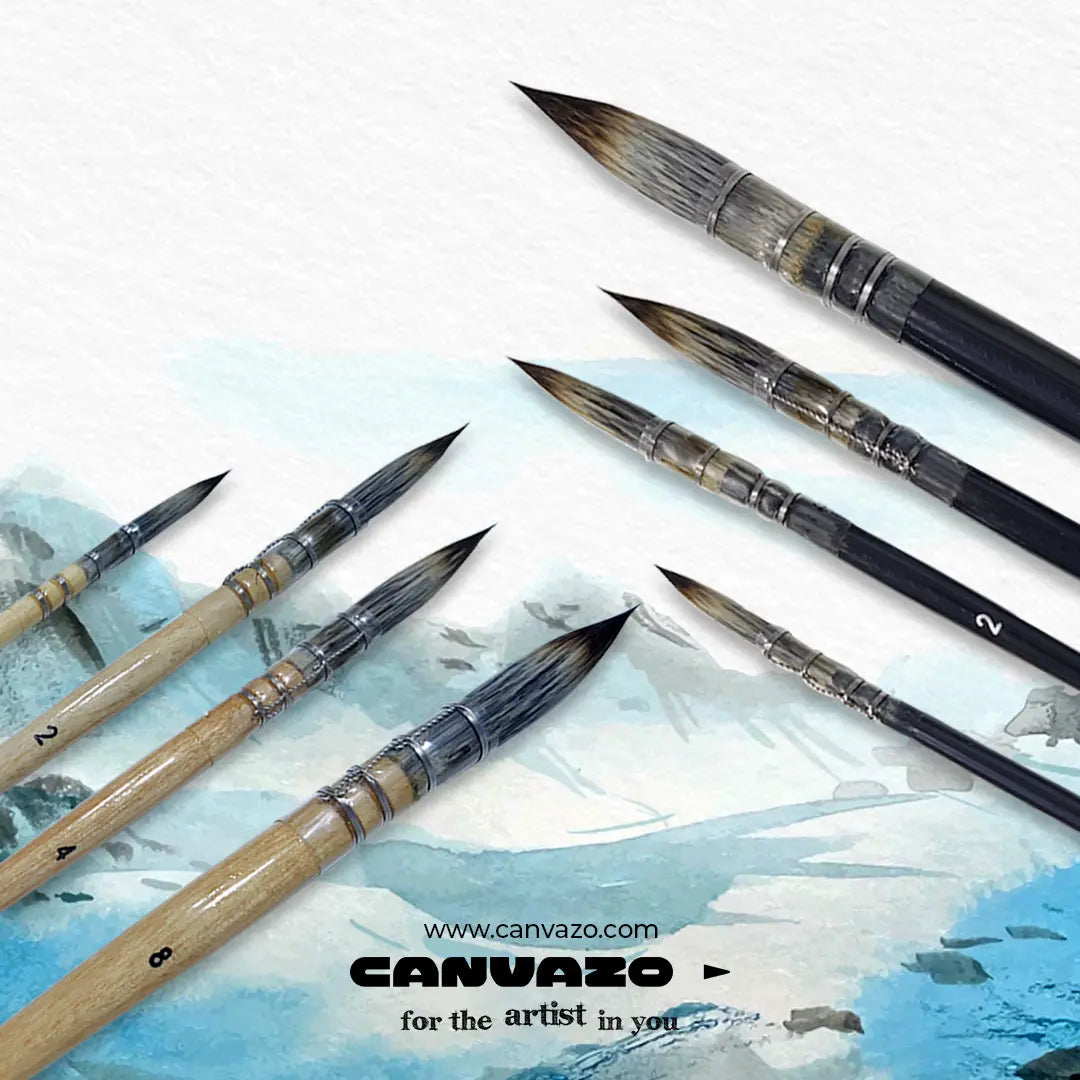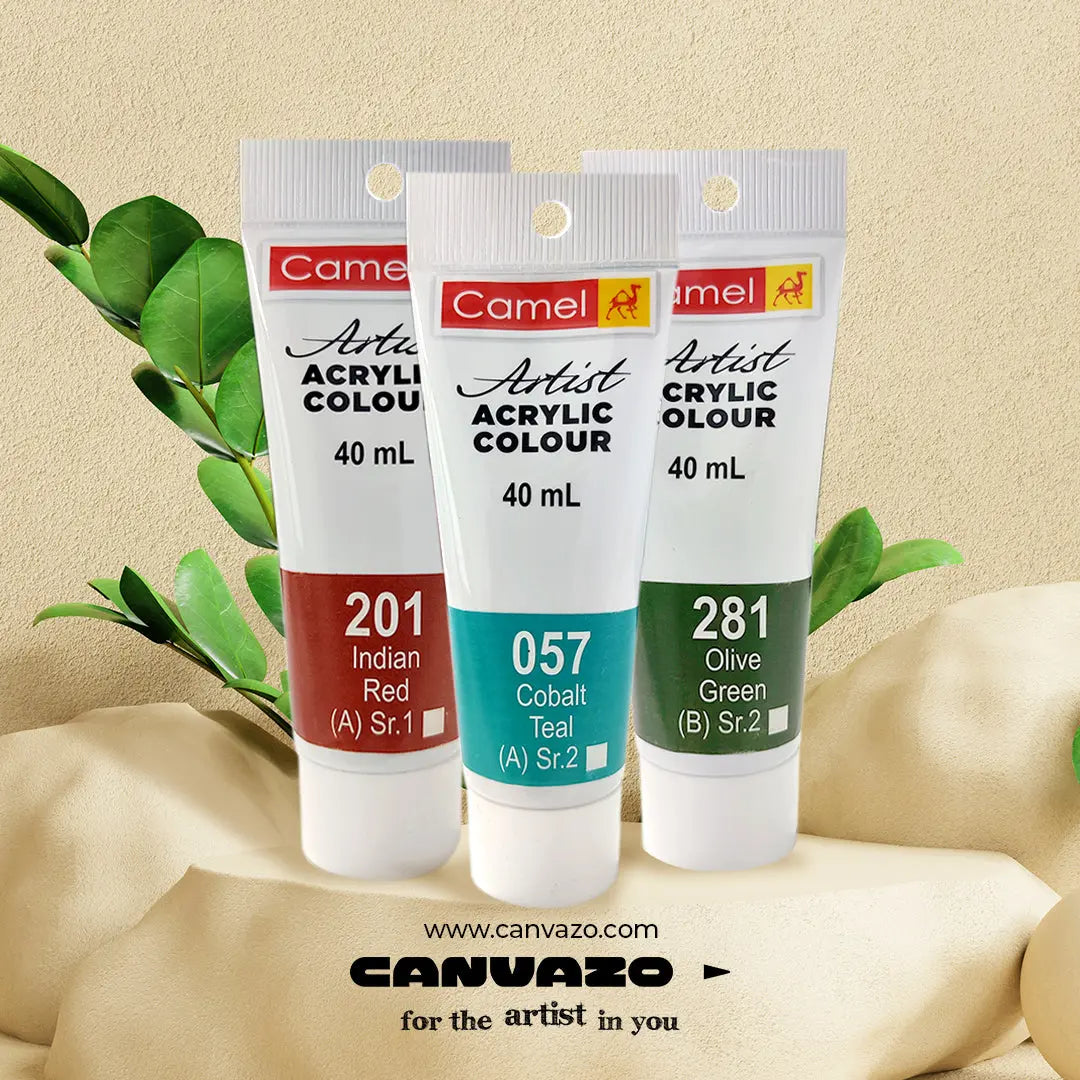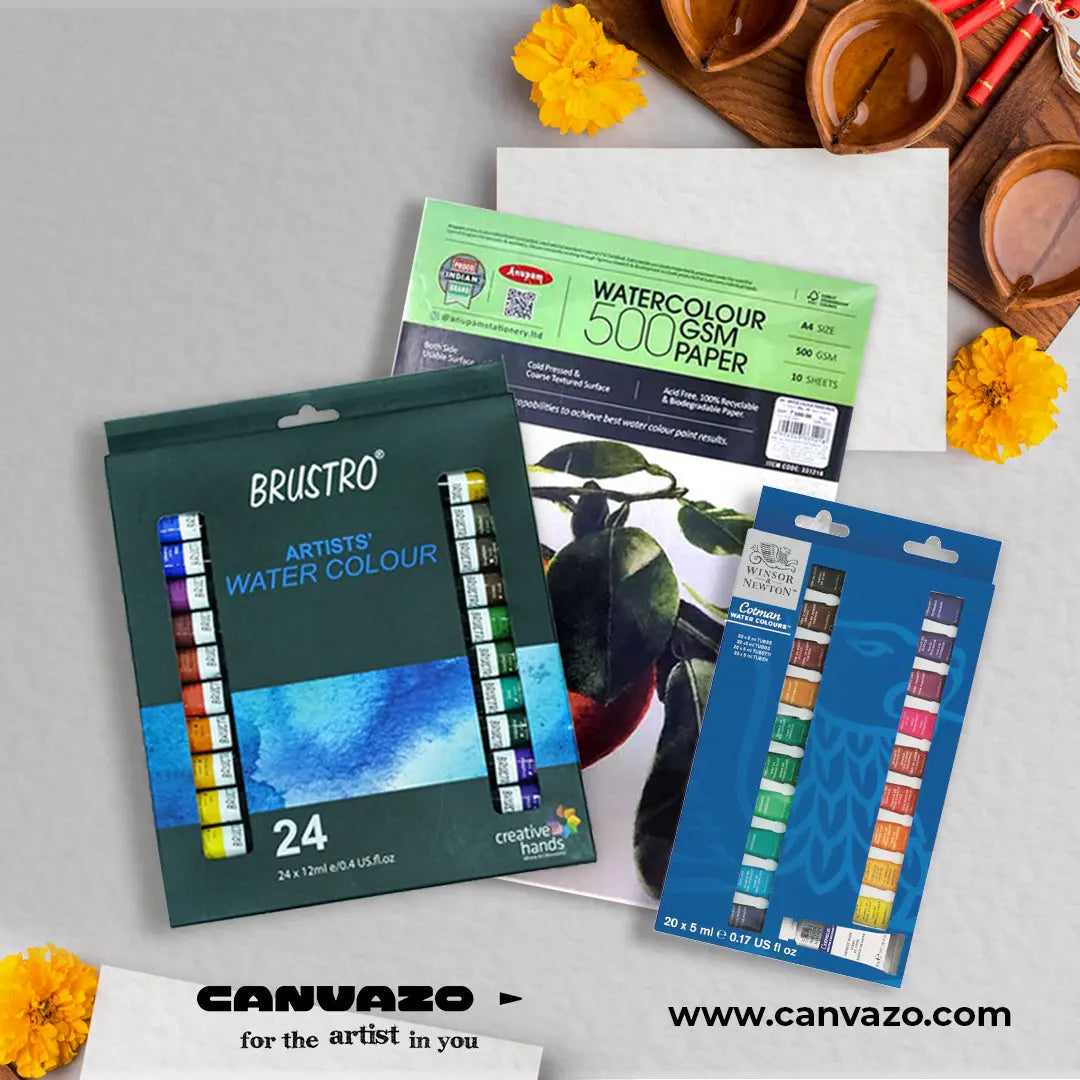Artists are obsessed when choosing the tools to create their perfect drawing. Just like swordsmen select their armor and tools carefully when going to battle, an artist does the same when choosing their tools to create that perfect masterpiece. One such tool that an artist chooses carefully is which brush to use when creating that awesome artwork. This is why choosing a nice set of watercolour brushes is extremely important. When it comes to watercolour, the brush is the foundation of any painting, so choosing the right one becomes essential.
What is a Watercolour Brush?
A watercolour brush is a type of paintbrush that is only used with watercolour paints. These brushes are typically made of natural or synthetic materials and come in various shapes and sizes to accommodate various painting techniques. Watercolour brush are an essential tool for any watercolour artist, as they can create broad strokes and fine details.
Types of Watercolour Brushes
-
Round brushes provide the most flexibility and can be used for a wide range of techniques, whereas flat brushes are best for washes and large areas of colour.
-
Filbert brushes are ideal for soft edges and blending, while angled brushes are ideal for creating sharp lines.
Some things are to be taken care of when choosing the perfect brush for all of your colouring needs.
Types of brush will depend on the type of painting you are doing.
For instance, if you are painting a landscape, you will need a different brush than if you are painting a portrait.
-
Size:
You will need a smaller brush for detailed work and a larger brush for covering larger areas.
-
Shape:
Round brushes are good for painting lines and curves, while flat brushes are good for painting straight lines and edges.
-
Bristles:
Natural bristles are good for absorbent surfaces, while synthetic bristles are better for non-absorbent surfaces.
-
Price:
Choosing the most expensive type of brush won't automatically make you a great artist, but you also don't want to end up with rough brushes that won't give the results you desire. So, find a brush that suits your style and also won't make a dent in your wallet.
How to use a Watercolour Brush?
You have decided which watercolour brushes you want to go with, but how do you use them effectively so your drawing gives that pop to your viewers?
Tips on How to use these Brushes effectively
- Always use a light touch when applying the brush to the paper.
- Be sure to evenly distribute the paint on the brush before applying it to the paper.
- Use a gentle back-and-forth motion when applying the brush to the paper.
- Be sure to clean the brush after each use.
Quality Watercolour Brush
- A good watercolour brush will be able to withstand more wear and tear than cheaper brushes.
- A quality watercolour brush will be able to hold more paint and produce a smoother finish.
- The handles on quality brushes are often more comfortable to hold, meaning you can paint for longer periods of time without fatigue.
- The overall finish of your painting will be better if you use a quality brush, as the brush will lay down the paint more evenly and produce less streaking.
Tips & Tricks for using a Watercolour Brush
- The amount of water you use will affect the outcome of your painting. Too much water will make the colours run and blend together, while not enough water will make the colours appear dull and lifeless.
- You can create different effects by varying the amount of pressure you apply to the brush. A light touch will produce a delicate result, while a heavier hand will create bolder strokes.
- Experiment with different brushstrokes to create interesting textures and patterns.
- Remember that watercolours are transparent, so you can layer them to create depth and richness in your painting.
- Watercolours are forgiving, and even the most imperfect painting can be beautiful in its own way.
Benefits of using a Watercolour Brush
- You will be able to create a wide range of effects, from very soft and delicate washes to more bold and vibrant strokes. They are also easy to control and allow for a great deal of precision.
- You will be able to paint a wide variety of subjects, from landscapes and seascapes to portraits and still life. They are also ideal for painting outdoors, as they are compact and easy to carry around.
How to use brushes to create different effects in your paintings?
For example, you can use them to create a soft, blended effect by lightly sweeping the brush across the surface of the paint. Alternatively, you can use them to create a more textured effect by applying the paint in a stippling motion.
If you want to create a more dramatic effect, you can use brushes to apply the paint in a thicker layer. This will give your painting more depth and richness to your artwork. For example, you can try using long, sweeping brushstrokes to create a sense of movement or short, choppy brushstrokes to create a more dynamic effect.
So don't be afraid to experiment, as you will be able to create a wide range of effects with different types of brush. And don't forget once you are comfortable with a particular type of brush, stick to that one and don't go back and forth. Just practice and you will be able to create beautiful art pieces.
So, if you are looking for a quality brush for your upcoming masterpiece, then Brustro brushes are perfect for you and your needs. Brustro brushes are made of high-quality materials that are made to last for a long time. They are extremely adaptable and can be used for a variety of different tasks. Last but not least, they are very affordable, so you don't have to break the bank to get the high-quality results you desire.



